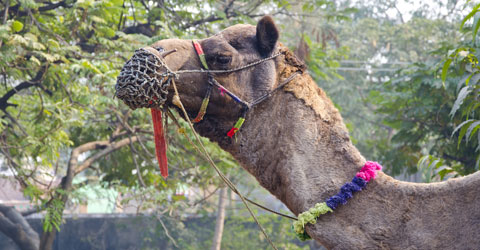Giant Camels Were Once Found In The Arctic

The ancestor of the modern-day camel originated in North America and was a giant. The giant camel once had a shoulder height of nine feet, although its signature hooves and hump were very much like those found on camels today. While surprising, the big news is not that camels originated in North America. That’s been known for a while. What was recently discovered is that camels actually once lived in Canada’s famous arctic, an area that is mostly known for being extremely cold.
That’s right, folks. Camels once used their thick skin and water reserves to survive six months of winter in Canada’s furthermost north region. Granted, winter in the Artic “was like a desert” at the time, according to Natalia Rybczynski, a paleontologist at the Canadian Museum of Nature who discovered the big find. The skeletal remains of the giant camel were found roughly 750 miles north of any other camel fossils. As the weather got colder, the camels found reasons to move farther south, eventually heading to Eurasia via a land bridge known as the Bering Isthmus. So, while the whole story seems a little wild, it really isn’t.
According to the New York Times, the remains were found all the way back in 2006. In subsequent years, they were studied fully until on Tuesday, the Museum of Nature’s findings were presented. The study was published in the journal Nature Communications and if you want to check out what the bones of giant camels look like, I suggest you check it out.
Photo Credit @Shutterstock.com/ Alis Photo
Your Daily Blend of Entertainment News

Jessica Rawden is Managing Editor at CinemaBlend. She’s been kicking out news stories since 2007 and joined the full-time staff in 2014. She oversees news content, hiring and training for the site, and her areas of expertise include theme parks, rom-coms, Hallmark (particularly Christmas movie season), reality TV, celebrity interviews and primetime. She loves a good animated movie. Jessica has a Masters in Library Science degree from Indiana University, and used to be found behind a reference desk most definitely not shushing people. She now uses those skills in researching and tracking down information in very different ways.
